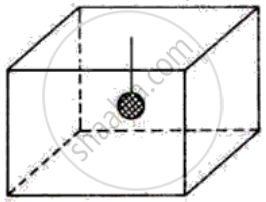Advertisements
Advertisements
Question
Solution
The flask consists of a double-walled glass container with a vacuum between the walls A and B. The inner side of A and the outer side of B are silvered. It has a narrow mouth which is closed by a non-conducting rubber stopper.
If a hot liquid is placed inside the flask, it cannot lose heat by conduction or convection, as there is no air between the walls. The small amount of heat lost from the liquid by radiation is reflected back into the liquid by silvering of the inner wall A and any radiation striking the outer wall B, is reflected back and prevented from reaching the liquid.
APPEARS IN
RELATED QUESTIONS
What must be the temperature in Fahrenheit so that it will be twice its value in Celsius?
A given mass of water is cooled from 10°C to 0°C. State the volume changes you will observe. Represent these changes on a temperature-volume graph.
What is a bimetallic strip?
One liter of mercury at 100C is heated to 300C. Find the increase in the volume of mercury. The coefficient of cubical expansion of mercury is 1.8 X 10-4 0C-1.
The hot metal ball is suspended from a string in a metal box as shown in the following figure
(i) What are the ways in which the ball loses heat
(ii) Which side of the box will be the hottest and which the least hot after some time? Explain.

Complete the following sentence:
SI unit of temperature is ______
Give reasons why –
we wear woolen clothes in winter
